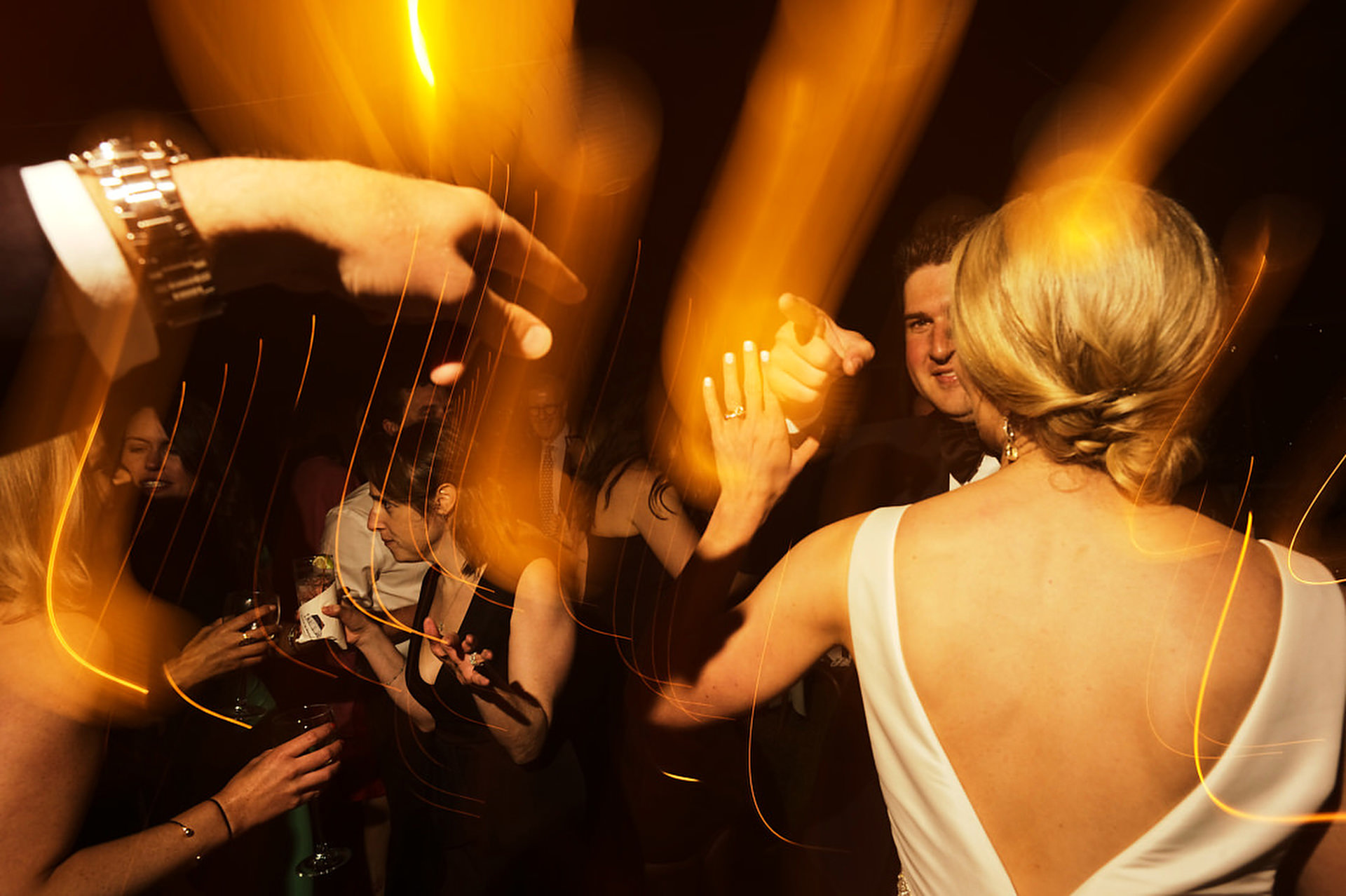GOING FLASH-LESS
Dragging the shutter can allow you to use the blur to your advantage, creating the effect of the subject crossing your path. This helps capture a sense of movement, an effect commonly seen in professional photographs of auto racing. Otherwise, shooting a photo at an adequate speed to stop the action produces an image that lacks that same dynamic atmosphere.
Of course, the greater focal length of a long lens increases the likelihood of noticeable camera shake and motion blur at slower shutter speeds, which sometimes may be creatively desirable. Generally speaking, a 50mm lens should be used with a shutter speed no slower than 1/50th sec for a sharp image. Going slower than that will probably yield that motion blur, whether desired or not. A 24mm lens has the same effect at about 1/25th second; a 100mm lens at 1/100th sec. Some wedding photographers will even try to get the shutter speed down to 1/15 of a second or slower with a 24mm wide lens, or down to at least 1/60 of a second with a longer lens, to create maximum blur.
During a typical wedding day, there are many moments which may perfectly lend themselves to using this technique; from the bride’s hurried preparations at home, to members of the wedding party walking down the aisle, to the newly-crowned couple exiting the church as husband and wife for the very first time.
In any of these instances, panning the camera along your subject’s path of movement will create that stunning “frozen in time” effect, complete with motion-blurred background. When editing the shot, retain as much of the motion-filled background as possible, as this is truly what gives the moment life and a sense of place.
Panning the camera across the scene with a slow shutter speed also turns any light source, be it candles or light bulbs, into streaks of light, which can create some cool effects. Twisting the camera in a circle during a long exposure produces circular streaks of light. Another trick to try is zooming in or out while the shutter is open, which can create some funky effects. Experiment, but understand that some techniques can be difficult to nail down as planned.


















































